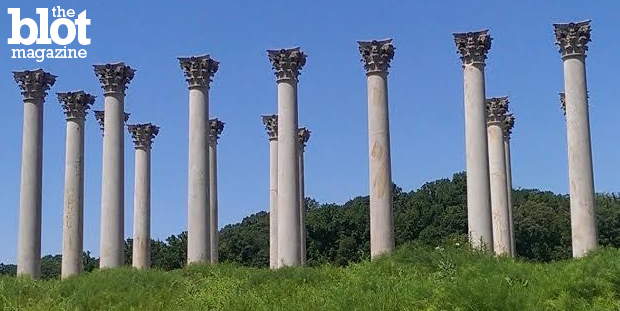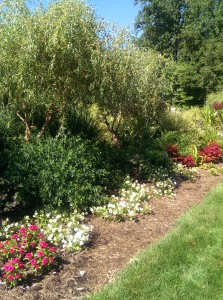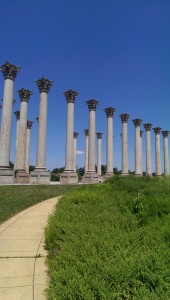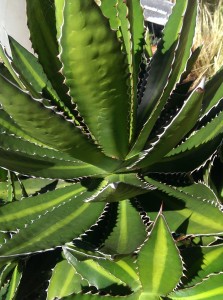Editor’s note: This is the first in TheBlot Magazine’s “Park It” series, which will highlight the best — and often little-known — parks and green spaces in cities around the world.
Tucked in the middle of bustling Washington, D.C., the U.S. National Arboretum seems miles away from the snarled traffic and fast-paced politics of the city.
I grew up near D.C., with parents who understood the importance of filling our brains with culture. I can navigate the National Mall with my eyes closed. Even though I’ve lived hundreds of miles away for most of my adult life, I can still tell you the best weekend to see the cherry blossoms or where to find the best free parking for a day of sightseeing.
But I’d never been to the 446-acre arboretum — didn’t even know it existed, in fact — until my uncle mentioned it at a summer get-together. I’d been talking about my deep, abiding love for the U.S. Botanic Gardens, a giant-sized terrarium tucked into the shadow of the Capitol Building. My uncle chimed in with the suggestion to visit its sister site. And after a little research, I took some family and my dog to check it out. According to its website, the National Arboretum was founded in 1927. The rolling hills and beautiful gardens, grouped by theme, draw more than 50,000 visitors a year. In fiscal year 2015, about $11.6 million in federal dollars will keep it running. They allow dogs — as long as they are leashed and don’t leave any doggy memos (liquid or solid) on the plants. Oh, yeah, it’s also free to visit.
We visited on a sunny, humid Monday morning, so the place was nearly deserted. We stopped first at the visitor’s center, whose grounds boast a profusion of colorful flowers and green-headed trees. We grabbed a map of the grounds and, as my dog Emerson sniffed the black-eyed susans, my parents and I plotted out our plan of attack. Although the arboretum is accessible by metro and bus, I recommend taking a car. The themed gardens are spread out with small parking lots nearby each major stop. On foot, you’d never be able to cover all of the grounds.
The major attractions at the arboretum include an azalea garden that attracts hundreds of visitors each spring. The bushes explode with bright blooms, making a walk through the woods a fully sensory experience. My recent visit was at the tail end of the azalea season, so only a few late bloomers were showing their colors.
Not to worry, though. After a short walk, we found the Asian and China collection, both of which featured lush greenery and graceful lilies planted throughout the gently sloping path. According to the arboretum, these gardens offer something new in bloom each season, so you never know quite what you’ll find. The path takes you to a small pagoda that boasts a panoramic view of the Anacostia River, which glittered in the sunlight when we visited. Some of the plants in this garden date back to 1949, according to information from the arboretum.
In addition to these gardens, the arboretum pays homage to the Far East with a museum dedicated to bonsai. “The National Bonsai & Penjing Museum began when Japanese bonsai enthusiasts in the Nippon Bonsai Association donated 53 bonsai and 6 viewing stones to the people of the United States to commemorate the U.S. Bicentennial in 1976,” the arboretum’s website states. “The collection has grown steadily with the addition of pieces from American bonsai masters and penjing from China. Today, 3 pavilions house about 150 plants.”
The National Arboretum also offers a dogwood collection, a fern-filled path in the woods, a fragrant-smelling herb garden, a perennial garden overflowing with peonies and lilies, a children’s garden and more. But perhaps the most unusual offering is its rows and rows of towering Corinthian columns that once graced the Capitol. The sandstone columns were placed on the East Portico of the Capitol in 1828, years before the iconic dome was complete.
According to the arboretum’s site, “Their stay at the Capitol was to be limited by an oversight. The dome of the Capitol, completed in 1864, appeared as if it was not adequately supported by the columns because the iron dome that was ultimately built was significantly larger than the dome that the designer envisioned. An addition to the east side of the Capitol was proposed to eliminate this unsettling illusion, but it was not constructed until 1958.”
In the late 1980s, they were moved to the arboretum. They stand in an open, rolling meadow, looking like a sophisticated Stonehenge. We got lucky on our visit: A deep, blue sky made the soaring columns picture-perfect. Visiting the columns, which rise above a burbling reflecting pool, makes you speak more quietly, out of respect for the atmosphere.
My visit to the National Arboretum left me feeling inspired — both by the warm weather and close contact with nature and the hard work of staff who keep all the flowers and plants looking their best. Even if I had a staff, I’m not sure my little backyard garden would look so perfect. But it’s not just beauty that the arboretum is after. Research and conservation is part of its mission, too. Information on visiting the U.S. National Arboretum, including special events and programs, can be found on its website. The grounds are open every day except Christmas from 8 p.m. to 5 p.m. In addition to cars, the grounds may also be toured on foot, bicycle or a special tram provided by the arboretum. Many of the features are wheelchair-accessible.
Erin L. Nissley is a contributing journalist for TheBlot Magazine.










